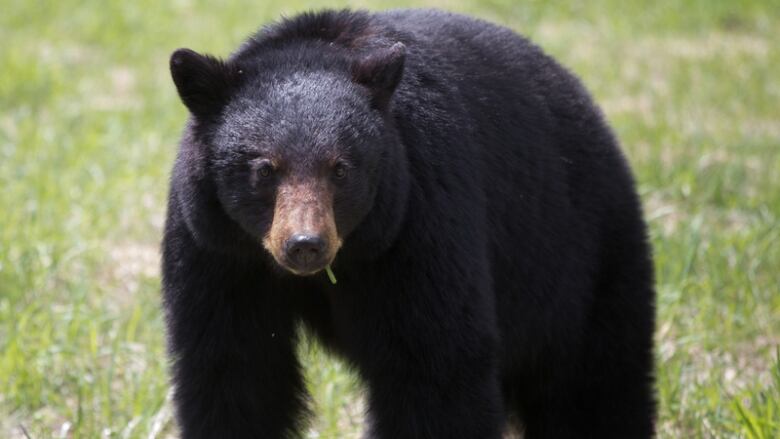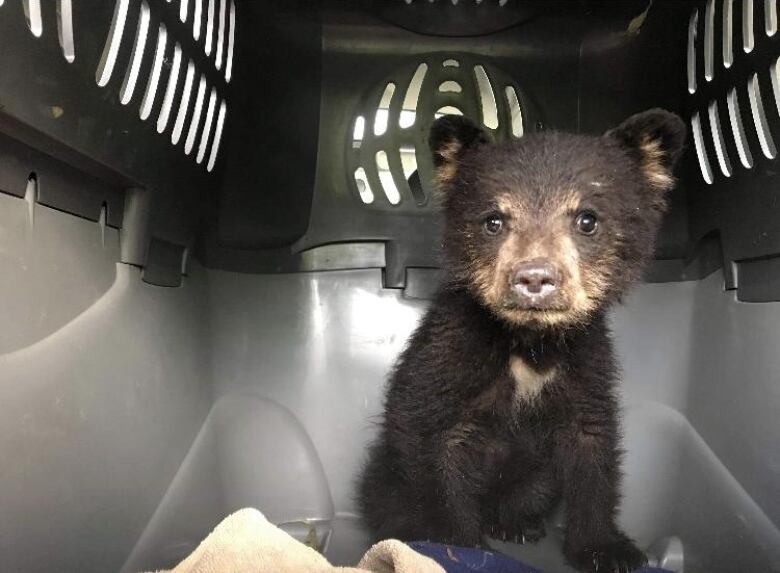Advocates call for conservation officers to wear body cameras
2023 saw decade-high number of black bears killed by the B.C. Conservation Officer Service

The recent deaths of two young black bears have wildlife advocates once again callingfor officers with the B.C. Conservation Officer Service (COS) to wearbody cameras.
Pacific Wild, a non-profit organization focused on wildlife conservation, first called on the Environment Ministry to requirebody cameras on conservation officers in 2019,aftermore than 500 bears were put down that year.
Now, the organizationis renewing those calls, after 2023 saw a decade-high number of 603 bears killed by theCOS, according to the province's online predator statistics.
Mollie Cameron, wildlife specialist with the organization, said they are concerned about the decision-making process conservation officers follow when they decide whethera cub is eligible for rehabilitation.
"So many [conservation] officers are working independently and in such rural and forestry settings, the use of cameras can actually both create that accountability and transparency, as well as, you know, back up any decisions that they have made," Cameron said.
She pointed to two recent incidents: The first occurred in December, whenan injured cub found near Buckley Bay on Vancouver Island was euthanized.The cub was described by theCOS as emaciated and too weak to survive.
The second incident occurred Jan. 15 when a young bear found in Nelson, B.C., was also euthanized. The bear was in poor health, according to officers who reportedly consulted with wildlife biologists.
"We believe that proper assessment through a qualified veterinarian with medical experience to determine the cubs' eligibility or candidacy for rehabilitation is crucial," she said.

'We would have no issues with body cam': COS
Len Butler, deputy chief with the COS, saidhe has no objections tobody cameras.
"We would have no issues with body cam because we are confident in our abilities of how we're making decisions, why we're making decisions," he said.
Butler said the service has been receiving around 27,000 calls a year about black bears through the Report All Poachers and Polluters (RAPP) line, and that their main concern is public safety.

When assessing wildlife, Butler said conservation officers will consult with a wildlife biologist and vet if possible.
He said they also follow guidelines based on input from wildlife biologists and the provincial wildlife veterinarian, which the Environment Ministry said provides training on wildlife handling, care and safe euthanasia.
When a conservation officer decides to put an animal down to end suffering, Butler said, it's based on good rationale.
"Do we enjoy doing this? Absolutely not," he said.
"You have to go with the belief that you're doing the right thing, and maybe it sounds corny, but that's the only way we can put it, that when we're putting the bear down it's not suffering, officers do struggle with that."
Regardingthe euthanized bear cub on Vancouver Island in December, Butler said officers "made the decision that time to put the bear down and we feel confident about that, but it's not from a lack of training, the training is there, the experience is there."
He added that wildlife rehabilitation centres only take cubs, and thatthe bear in Nelson was around two years old, emaciated, and was going into town for attractants, such as food.
"Then there's the risk assessment," he said. "It's easy to focus on the bears being destroyed, but not focusing on the problem."
He said conservation officers need the community's help in properly storing attractants.
More bear cubs in rehabilitation
Adam Ford, associate biology professor at the University of British Columbia Okanagan and Canada research chair in wildlife restoration ecology, said he doesn't believe body cameraswill change anything.
"We should be talking about how can we live alongside black bears," he said. "People can do a better job of managing their attractants and their interactions with bears if they want co-existence."
Ford saidmore black bear cubs have been going to rehabilitation centres in recent years.
The provincial government'sonline predator statistics show61 black bear cubs were taken to rehabilitation centres last year about three times as many as in2013.
"If people are advocating for officers to take actions that lead to more [bear] rehabilitation, then we need to advocate for not cameras, but for facilities that enable officers to have that option," Ford said.













_(720p).jpg)


 OFFICIAL HD MUSIC VIDEO.jpg)
.jpg)



























































































